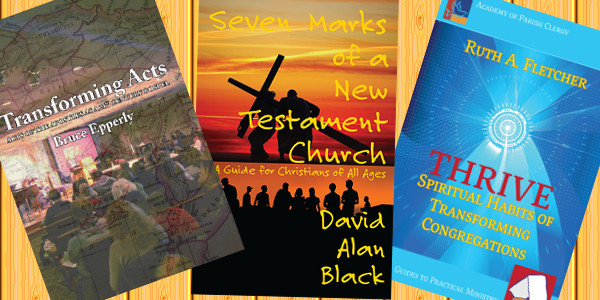Genre and Canonical Criticism
Continuing my discussion of Biblical criticism and the tools that make up that method, let’s look at genre and canonical criticism together. I do that, because they look generally at the same point in the production of the text as we have it, but look in different ways at that point in time.
We have already encountered the term “genre” in discussing form criticism. Make sure to distinguish the way in which “genre” is used in “genre criticism” as opposed to the way it is used in form criticism. In the former, it is a category of short elements, normally of orally transmitted material, that takes certain forms due to that process of transmission. Here we are looking at the genre of a larger literary document.
You may gather from that definition that we have shifted our focus away from the prehistory of the text and its development, to looking at the document as we have it now. At the same time we move from looking at smaller portions or even fragments of the text to looking at it as a whole document. Thus if we consider the book of Matthew, for example, form criticism is concerned with the individual sayings of Jesus and reports of his deeds, source criticism looks at how these were collected into documents which became sources for the author of Matthew, redaction criticism looked at how those sources were combined into the whole gospel in order to tell us what Matthew himself was trying to accomplish. Tradition criticism looked at this whole process. Genre criticism looks at the gospel of Matthew as a whole, asks what its genre “gospel” may be, what are its purposes, and how was it used by the community that saw it as a gospel. Canonical criticism looks at the whole of Matthew but looks at it as part of the canon of the bible and of the New Testament, and insofar as it is interested in a community, it would be the one that first saw this as authoritative for the church.
Genre Criticism
Recently I’ve been doing some study of the book of Daniel, in which genre criticism can be extremely important. Previously, I discussed the dating of Daniel, particularly from the point of view of Anthony Di Lella, author of the Anchor Bible commentary on the book. Di Lella believes that the book is pseudonymous, written in the 2nd century BCE, and also that its stories are not generally historical, but rather are edifying stories. (See Dating the Book of Daniel.) At the same time he maintains that this view does not conflict with inerrancy. How does he do that?
The issue is simply one of genre. He believes that one of the characteristics of apocalyptic is that it is pseudonymous, and he determines on various grounds that the stories are edifying tales and not historical, but he also determines that the use of this genre was to encourage people in a particular time of persecution, looking at the community that first received the book as a whole, and the purposes for which they would use the book.
On a much less radical note, genre criticism of the gospels asks just what type of literature the gospels are. Are they histories, and if so what type? Are they novels as some literary critics have proposed? For many, the answer is that there is a specific genre of “gospel” which is not identical to any other form of literature. Once we have determined the genre, we ask just what that genre was intended to do. It would appear that a presentation of a coherent chronological picture was not part of the plan, as the various gospels, even though they show signs that the authors were acquainted with certain of the others, do not present a consistent chronology. These are the types of questions that genre criticism is supposed to cover.
Canonical Criticism
Canonical criticism is concerned with where those gospels fit in that broader scheme. In studying the gospels one might ask why there are four, and just four, gospels, and just where Matthew fits into that scheme. How does this one gospel contribute to the function of the “gospel” genre (or whatever one may have determined that genre was)? Why do we have “gospels” in the canon at all?
In the case of Daniel, there are also issues of canonical criticism. Where does this type of literature fit into the faith life of the church? Why would we value an apocalypse, whether we see its stories as historical or not? Daniel itself is placed in different positions in the Jewish canon and in the Christian canon. Is there a reason for this? Canonical criticism is not largely a matter of looking at the order of the books, of course, but rather looking at how the book functions as part of the community’s Bible as a whole. Nonetheless the fact that the Christian canon seems to put a higher value on Daniel than the Jewish canon is probably significant in the way each community sees that book.
One can continue by asking what role Revelation plays in the New Testament canon. Many people didn’t think it should be there, and even some moderns don’t feel the right choice was made. When they say that Revelation should not be canonical, are they commenting on its usefulness in the church, its potential use, or the way in which it has been used or abused? These are questions that the canonical critic applies in study.
Putting things Together
Though this is not my last entry, the introduction of these two tools of Biblical criticism provides an opportunity for me to comment on the use of the tools in general. Too often Bible students who do start to use critical methods get tied up on one or two methods. These tools provide different ways of looking at the text, but in order to understand both the text itself and how it applies to the modern church or community, one needs to look at it in a variety of ways. Commentaries that focus solely on one aspect can be quite hard to use practically. A form critical commentary, for example, will look heavily at the prehistory of the text, paying much attention to hypothetical material while passing over the text as we have it. On the other hand, a canonical critic can be tempted to ignore the fact that a text does have a prehistory and act as though it dropped from heaven whole.
The Bible student who wants to get the most from the text will use a balance of tools as they are appropriate to the particular text he is studying.

